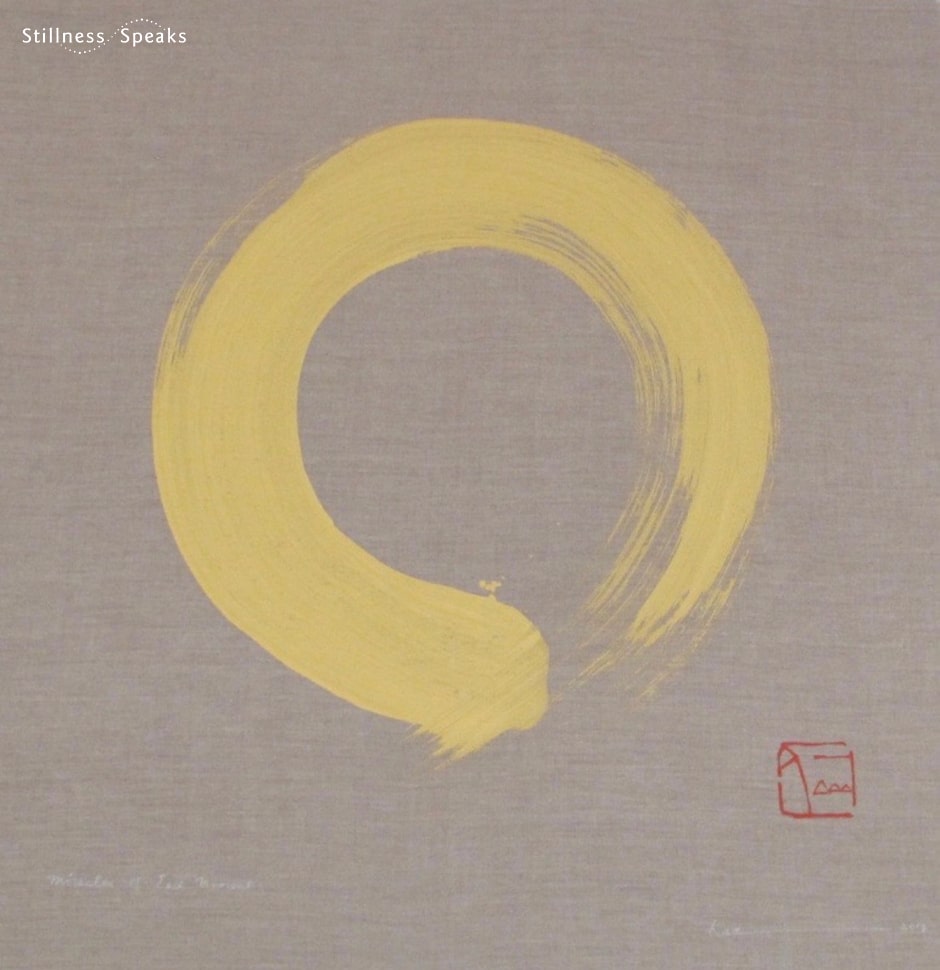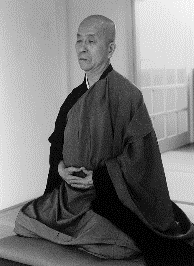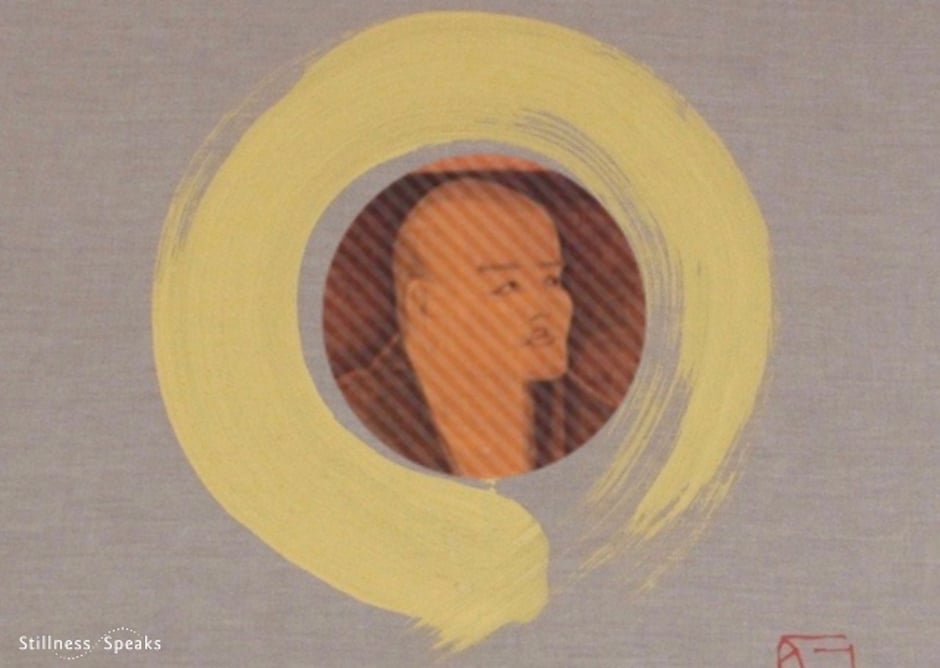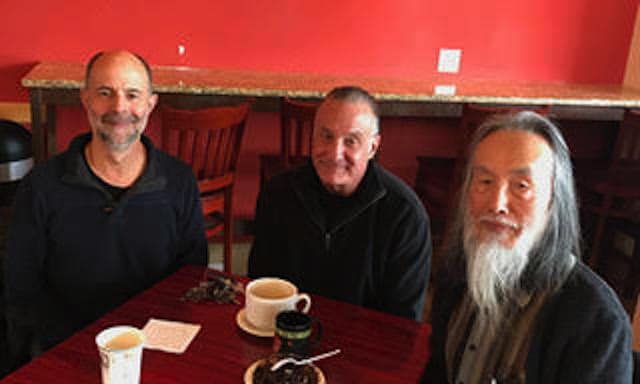“… circle of practice-enlightenment is renewed moment after moment …” ~ Dogen Zenji
In Part 5, we covered some of Dogen’s journey of realization (& Zen in Japan) and closed that Part with one of Kaz Tanahashi’s summary comments on Dogen’s answer regarding practice …
Continuing Kaz’s summary on Dogen:
“Dogen accepts this image of a linear process of seeking. But he also talks about the way as a circle. For him, each moment of practice encompasses enlightenment, and each moment of enlightenment encompasses practice. In other words, practice and enlightenment—process and goal-are inseparable. The circle of practice is complete even at the beginning. This circle of practice-enlightenment is renewed moment after moment.
At the moment you begin taking a step you have arrived, and you keep arriving each moment thereafter. In this view you don’t journey toward enlightenment, but you let enlightenment unfold. In Dogen’s words, “You experience immeasurable hundreds of eons in one day.” The “circle of the way” is a translation of the Japanese word dokan, literally meaning “way ring.” Although this word, which Dogen coined, appears only four times in his writing, it may be taken to represent the heart of his teaching.
Dogen calls the path of practice-enlightenment “the buddha way.” It is the path of all awakened ones of past, present, and future. … The path may be wide and limitless in theory but narrow in practice.”
… Dogen says, “Between aspiration, practice, enlightenment, and nirvana, there is not a moment’s gap.” Thus, nirvana is one of the four elements in a practitioner’s spiritual activity. For Dogen, nirvana is inseparable from enlightenment, and it is inseparable from one’s practice at each moment. In other words, there is no authentic practice that lacks enlightenment or nirvana.
Kaz continues: “While Dogen discusses aspiration, practice, and enlightenment in detail, he does not explain the last element, nirvana, which seems to be an invisible element in his teaching. It is as though he talks about the experience of nirvana without using this word.
Nirvana is regarded as the realm of non-duality, where there is no distinction between large and small, long and short, right and wrong, appearing and disappearing, self and other. It may be called reality itself, or the absolute place beyond time and space. This is a realm that cannot be grasped objectively. The intuitive awareness or transcendental wisdom that goes beyond dualistic, analytical thinking and leads us into this realm is called prajna in Sanskrit.
Dogen calls this place of inner freedom the buddha realm. It is where one is many, part is whole, a moment is timeless, and mortality is immortality. To experience this beyondness in the midst of the passage of time, change, and decay is a miracle. For Dogen, this miracle can happen each moment, as each moment of duality is inseparable from a moment of nonduality.
Duality and nonduality, change and no-change, relative and absolute, coexist and interact with each other. Dogen calls the experience of this dynamic “actualizing the fundamental point.” It is an immediate but subtle and mysterious unfolding of nirvana within a life of change and decay. Dogen suggests that we can realize this dynamic of “not one, not two” by going into and maintaining the deep consciousness that is experienced both in zazen and in daily activities conducted in a meditative state of body and mind.”
~ Kaz Tanahashi
Now, there are exceptional teachers in America that do not recommend practice. Their advice is deceptively simple: the student need only “welcome” whatever arises and notice the push and pull of desire. As the shrouded layers of attachments-likes and dislikes are seen, they do unfold. There is a deepening and clarifying – a growing abidance of the awakening experience. How long this process continues, varies by the student’s hidden proclivities and conditioning.
It could be said that meditation is what we are. And, there is a tipping point. It depends on the depth and desire of the student. When profoundly motivated, it is simply impossible to avoid awakening.
But, what does deeply motivated mean? Is one willing to traverse the country for the essential guidance of an experienced teacher? Are they motivated enough to sit still, quietly, so that the cumulative hidden conditioning and habitual behaviors are seen, and thus, unfold?

Stillness Speaks offers another free, downloadable, PDF of Shobogenzo, The Treasure House of the Eye of the True Teaching, A Trainee’s Translation of Great Master Dogen’s Spiritual Masterpiece, Rev. Hubert Nearman, O.B.C., translator.
We would be remiss not to mention one of the many major works on Dogen edited by Kaz Tanahashi, with contributions by many contemporary Zen masters (many of whom we will meet in our short journey into Japanese Zen): Treasury of the True Dharma Eye, Zen Master’s Shobo Genzo, published by Shambala Press. Upon inspection of Nishijima and Cross’ translation, if you sense the depth and clarity of Dogen’s work, we recommend you seek out this work by Kaz. Also, here are the other Dogen translations by Kaz (5 of the 8 books listed).
Rest assured, the work of Dogen is an immense undertaking. StillnessSpeaks will humbly return to his work in forthcoming posts.
So, with the conclusion of this very brief primer on Dogen … in the next segment, we will jump forth to the 20th Century, when the discovery of Zen in the West reached a peak and bore the fruit of a unique hybrid Zen – the American Zen … so stay tuned …
To access all parts of this entire series, please click on the link below
Exploring Eastern Wisdom’s Relevance for the West: a 9-part series
Opening Quote by Alan Watts: Good Reads.
Kaz Tanahasji’s quotes: excerpted from The Fundamentals of Zen – published in Tricycle Magazine February 19, 2009
Images (edited): 1) enso by Kaz Tanahasi – snapshot of Kaz’s painting at Chris Hebard House, used with permission, 2 ) Buddha by sciencefreak, CCO Public Domain, 3) Sunrise Sky by Grittapohn, CCO Public Domain, 4) Gudo Wafu Nishijima, CC BY-SA 3.0, 5) Chodo Cross, from Blue Mountain Heritage (permission pendiing).









